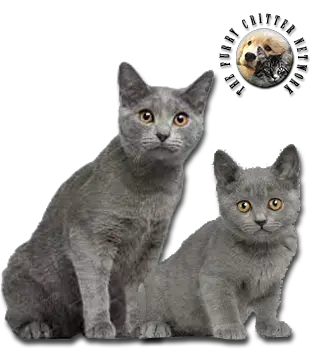Breed Standard
Head: Rounded and broad, but not a sphere, resembling an upside down trapezoid. Skull not domed, slightly rounded, with a narrow, flat space between the ears. Full, round, low-set cheeks, with mature males having larger jowls. The straight, broad nose is not turned up. Slight nose break allowed, though no nose break is preferred. Muzzle straight in relation to the head, tapered, but not pointed. Sizable whisker pads with moderately pronounced whisker pinch, giving the breed its characteristic smile. Powerful jaws, particularly in males over two years of age.
Eyes: Large and round, with the outer corner slightly upturned. Color: Orange to gold. No flecks of green or washed out colors.
Neck: Short, strong, and heavyset.
Body: Large and round, with the outer corner slightly upturned. Color: Orange to gold. No flecks of green or washed out colors.
Paw: Straight, short to medium in length, strong, and very muscular. Small, round, broad paws.
Tail: Of moderate length. Thick at the back and tapering slightly to a rounded tip.
Coat: Short, thick, extremely dense (like an otter), glossy, slightly wooly, and water-repellant, standing away from skin due to the profuse undercoat. Color: Any shade of blue, from ash to slate, but bright blue is preferred. Uniformity of color is essential. Slate gray nose leather and rose taupe paw pads. The skin is blue. Kittens are born with tabby markings that fade between the age of six months and one year. Orange eye color does not appear until the age of three months, replacing the typical blue-gray eyes of kittens.
Fault: Upturned nose or severe nose break. Broad, heavy muzzle. Eyes almond-shaped or set too close together. Green eyes, dull or washed out eye color. Coat: White lockets. Tipping, ghost barring, or variation in coat color. Brown or red highlights.
History
The blue cat of France with golden eyes has existed for centuries This breed is very old. Its short, wooly coat is said to have been sold as otter fur in ancient times! The Chartreux has apparently existed in France for many centuries. In the 16th century, Joachim du Bellay mourned the death of this little gray cat, Belaud. In the 18th century, Buffon, in Natural History, refers to the Chartreux as the Cat of France, while Linn distinguished it from the Angora cat, naming it Felis cattus caeruleus, or blue cat. There are many theories as to the origins of this breed. Legend holds that the Carthusian monks bred these cats after bringing them back to France from South Africa. So what is the origin of this breed's name? Some believe the name describes its dense, wooly coat that resembles a Spanish wool fabric called Chartreux pile. Others, such as Fizniger, posit that the breed is a cross between the Manul cat and the Egyptian cat. In fact, its ancestors may have been born in the harsh mountainous regions of Iran, Syria, and Turkey where they would have needed their thick coat. Some Chartreux were introduced in France during the Crusades.In the 1920s, French breeders crossed the Chartreux with Persians. A formal breeding program did not begin until 1926, when the L ger sisters began working with smoke blue cats roaming freely on Belle-Ile-sur-Mere in Morbihan. After defining their body features, Dr. Jumaud (1930) named these cats Felis cattus cartusinorum. The breed was shown at the Cat Club de Paris in 1931. The first standard was published in 1939. In the 1960s and 1970s, crossbreeding with Blue British Shorthairs was so common that the F.I.Fe decided in 1970 to combine the two breeds. So was the Chartreux destined to disappear? Indeed no. J. Simonnet, President of the Chartreux Cat Club, effectively proved the authenticity of this ancient French breed to the F.I.Fe, which then separated the two breeds and prohibited mating across the two breeds. The first Chartreux arrived in the United States in 1970. Both the C.F.A. and T.I.C.A. recognize the breed.
Behavior
Chartreux cats tend to be quiet, rarely making noises such as mewing or crying, and some are mute. They are quite observant and intelligent, with some Chartreux learning to operate radio on/off buttons and to open screen door latches. They take about two years to reach adulthood. Chartreux cats are playful cats well into their adult years; some can be taught to fetch small objects in the same manner as a dog. Chartreux are good with children and other animals. They are non-aggressive, affectionate, good travelers and generally very healthy. Chartreux tend to bond with one person in their household, preferring to be in their general vicinity (often following their favored person from room to room), though they are still loving and affectionate to the other members of the household.
Health
Prone to a Luxating Patella.






